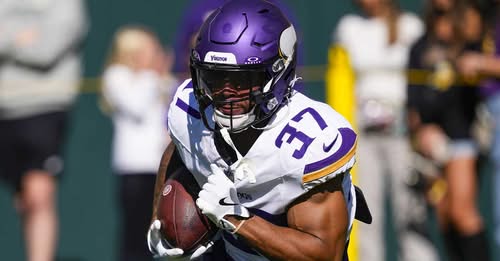The Baltimore Ravens have once again demonstrated their commitment to building a formidable and versatile offense by adding a seasoned veteran running back to their already deep and dynamic backfield. This strategic move reflects the franchise’s dedication to maintaining a competitive edge in one of the NFL’s most physically demanding positions and ensuring the team is well-equipped to handle the grueling nature of the season. By bringing in an experienced running back, the Ravens are addressing both immediate and long-term needs, balancing youthful talent with veteran savvy to create a more balanced and adaptable offensive unit.
The running back position has always been a cornerstone of the Ravens’ offensive identity. Known for their physical, ground-and-pound style of play, the Ravens have traditionally leaned on a strong rushing attack to control the tempo of games and wear down opposing defenses. This approach has not only been effective but also emblematic of the team’s gritty, hard-nosed philosophy. Adding a veteran presence in the backfield continues this tradition, providing the coaching staff with additional tools and options to diversify their running game and keep defenses guessing.
This latest acquisition is particularly notable because it adds depth to a position group that has shown flashes of brilliance but has also faced challenges with injuries and consistency. Having multiple capable running backs allows the Ravens to distribute the workload more evenly, reducing the risk of wear and tear on any single player. This is crucial in a league where running backs often face intense physical tolls, and durability can be as valuable as raw talent. A veteran running back, with years of experience navigating the demands of the NFL, brings not only skill but also a seasoned perspective on game management and situational awareness.
Moreover, the addition of an experienced running back enhances the Ravens’ offensive versatility. In today’s NFL, running backs are expected to contribute beyond just rushing—they must be proficient receivers out of the backfield, blockers in pass protection, and sometimes even key special teams players. A veteran who has honed these skills over multiple seasons can immediately impact the team’s offensive schemes, helping to open up the passing game by posing a dual-threat to defenses. This kind of versatility is invaluable, particularly in the Ravens’ system, which emphasizes creative play-calling and the ability to adapt to different defensive looks.
The move also sends a strong message about the Ravens’ intentions for the season. It shows that the organization is proactive in addressing roster needs and is not solely relying on developing young players. While youth and potential are important, veteran leadership is often the X-factor that can push a team over the edge in close games and playoff battles. This new running back’s experience and professionalism will be an asset in the locker room, providing mentorship to younger players and contributing to a winning culture that the Ravens have cultivated over the years.
From a strategic standpoint, this signing allows the Ravens to experiment with different backfield rotations and packages, making their offense less predictable. The coaching staff can tailor game plans based on matchups, injuries, and in-game situations, knowing they have reliable options to deploy. This flexibility is critical in a league where opponents constantly adjust and try to exploit any perceived weaknesses. By deepening their running back corps with a proven veteran, the Ravens are better positioned to withstand the inevitable challenges of an NFL season.
Additionally, the veteran’s knowledge of the game and ability to read defenses can elevate the entire offense’s performance. Experienced running backs often serve as extensions of the coaching staff on the field, making adjustments and helping teammates stay aligned. Their presence can boost overall team confidence, especially in high-pressure situations where composure and decision-making are paramount. For the Ravens, who aim to make a deep playoff run, having this kind of dependable leadership in the backfield could prove to be a decisive factor.
It’s also worth considering the potential impact on the young backs currently on the roster. The presence of a veteran can push younger players to improve, learning from the nuances and professionalism the newcomer brings. This mentorship dynamic is essential for player development and long-term success. The Ravens have shown a knack for developing talent, and adding a seasoned pro only strengthens their ability to groom the next generation of stars at the position.
On the flip side, the signing might also influence the team’s running game style by blending the power running tradition with more finesse and receiving capabilities. Depending on the veteran’s skill set, the Ravens can tailor their offensive identity to incorporate more varied rushing attacks and more effective passing options out of the backfield. This evolution keeps the offense fresh and difficult to defend, particularly against teams that rely heavily on stopping the run.
In the broader context of the NFL, the Ravens’ decision to add a veteran running back highlights a growing trend among teams to build multi-dimensional backfields. With the physical toll on running backs leading many franchises to rely on committees rather than a single workhorse, depth and experience have become premium commodities. Baltimore’s move reflects this understanding and demonstrates their intent to stay ahead of the curve in roster construction.
This signing also has implications for the Ravens’ salary cap and roster management. Veteran players often come with more predictable contract terms compared to rookies or unproven free agents, which can help the team manage its finances and maintain flexibility. The ability to allocate resources efficiently is critical for sustaining success in a league that constantly demands balance between star power and depth.
In conclusion, the Baltimore Ravens’ addition of an experienced veteran running back to their deep backfield is a calculated and strategic move designed to bolster their offensive versatility, depth, and leadership. This signing reinforces the team’s commitment to a physical, adaptable running game while also providing crucial mentorship and stability. As the Ravens prepare for the challenges of the upcoming season, this veteran presence will likely prove invaluable, both on and off the field, as they aim to maintain their status as one of the NFL’s elite franchises. With this move, the Ravens are not only addressing immediate roster needs but also setting the stage for sustained success in the years to come.



